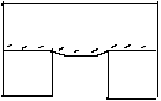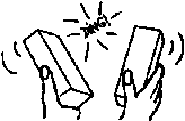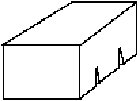How to Make Bricks - Assessing the Technical Problems of Brick Production
Contents
Short Description
- Problem: Technical Problems of Brick Making
- Idea: Manual of Different Problems
Introduction
These notes should help identify brickmakers’ technical problems. The problems need to be identified correctly for a solution to be found; not always easy when faced with a faulty brick or batch of bricks. So, the notes try to highlight the main problems, the reasons for them, and possible solutions. We'll consider the final product, the fired brick, and trace faults back to their cause1. In reality small-scale brickmakers often face many problems, such as marketing, business management, record keeping, and fuel scarcity. Quality control is only one aspect of running a successful enterprise. In fact, the main problem is seldom technical. For example, it's no good upgrading the output of a brickworks, causing extra work and expense, if customers aren't prepared to pay more for improved quality. Nevertheless, it is worth knowing where problems originate and how they might be solved, particularly for brickworks suffering heavy losses or unable to meet the standard their market demands.
1 See Brickmaking in Developing Countries (Parry, BRE, 1979) and Village-Level Brickmaking (Beamish & Donovan, Vieweg, 1989) for additional information.
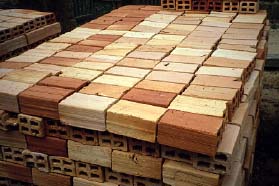
Figure 1: A pile of fired bricks, Alto Mayo, Peru. To be noted are the cracks and deficiencies in the bricks. © Practical Action/Theo Schilderman
Field testing
Specific defects are illustrated in the tables. However, there are some simple tests which can be done in the field. Firstly, when you handle a brick, see if it's soft. Can you pick off the edges? Can you scratch the surface with your fingernail? If so, the brick is probably underfired - one of the most common problems. Now, break a brick in half. Was it easy? Is there a 'core' of different colour material? If the brick breaks easily or has a core like this, then it's underfired. What about the cross section? Are there lumps or stones, internal cracks or holes? If so, the soil probably wasn't mixed well enough.
You can tell a lot about bricks by soaking them in cold water for 48 hours. If you weigh bricks before and after soaking, you can calculate the percentage of water they absorb. A good brick shouldn't absorb more than 15% of its dry mass. If bricks are too absorbent they suck moisture out of mortar and weaken the bond. You may find the brick dissolves altogether. In this case, it's definitely underfired - and dangerous to use in any building. The presence of lime may also be detected by soaking bricks. If lime is present as lumps, it may expand and cause fractures, exposing powdery white deposits.
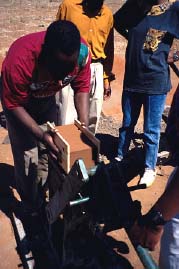
Figure 2: Brick moulding, Zimbabwe © Practical Action/Theo Schilderman
Laboratory tests
If bricks have to satisfy an official standard, they will probably have to be tested in a laboratory. These tests will need to be repeated periodically to maintain quality control. Tests normally specify the sizes for bricks and the acceptable compressive strength - how much weight they can bear before crushing2. For example, in Zimbabwe 'common' bricks are nominally 220 x 105 x 75 mm and have a crushing strength of 7 MPa. For certain uses, such as damp-proof courses, water absorption or suction rate may also be specified.
2 See Building Materials in Developing Countries (Spence & Cook, John Wiley, 1983) and Materials of Construction (Smith & Andres, McGraw-Hill, 1988) for examples of specifications.
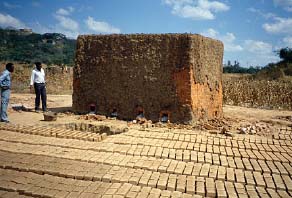
Figure 3: Coal fired bricks drying in sun Zimbabwe ©Practical Action/Theo Schilderman
Raw material tests
The quality of brick which can be made at a particular site is largely predetermined by the type of soil available. There are some simple soil tests which don't need very special equipment. In the sedimentation jar test, a sample of soil is dissolved in a transparent jar of water. When the soil settles you can get an idea of the fractions of clay, fine and coarse sand that are present. Another test is the linear shrinkage test. A sample column of wetted and mixed soil is pressed into a mould and allowed to dry. The shrinkage indicates how much clay there is in the soil and whether problems can be expected when drying bricks3. Soil test are useful indicators, but you really only find out whether good bricks can be made by firing samples. Before investing in a full size kiln, however, it is possible to fire cubes or eggs of soil either in a laboratory kiln or a simple field oven.
3 These and other tests are specified in Small Scale Brickmaking (Smith, ILO Technical Memorandum No. 6)
Conclusion
These guidelines will help field-workers judge the quality of bricks. Furthermore, if the information presented is used as a basis by those working with brickmakers, it will go some way to establishing an agreed approach to assessing the technical problems they face and proposing appropriate solutions That is, solutions which make the best use of available resources: are affordable, manageable, cost effective, and - ultimately - 'successful'4.
4 Technology and Underdevelopment (Stewart, Macmillan, 1978)
Equipment Suppliers
- TARA Machines & Tech Services Pvt. Ltd.
29, Ghitorni, Mehrauli–Gurgaon Road
New Delhi – 110030
Tele-fax - +91–11– 26801521, 26804482, 26805826
Website: www.taramachines.com
- Energy efficient brick firing Klin TARA Eco Kiln
- High quality brick moulding TARA Brickmek Moulding
- Energy efficient brick firing Klin TARA Eco Kiln
References and further reading
This Howtopedia entry was derived from the Practical Action Technical Brief Assessing the Technical Problems of Brick Production - A Guide for Brickmakers and Field-Workers - Technical Brief.
To look at the original document follow this link: http://www.practicalaction.org/?id=technical_briefs_construction
• Ten Rules for Energy Efficient, cost Effective Brick Firing: A Guide for Brickmakers and Field-workers Practical Action Technical Brief
• How to Measure the Energy Used to Fire Clay Bricks: A Practical Guide for Brickmakers, Field-workers and Researchers Practical Action Technical Brief
• Sustainable Small Scale Brick Production: A question of energy, Theo Schilderman, 1999, Practical Action Technical Brief
• Evolving a Standard to Compare the Energy Efficiency of Brick Firing Processes, Kelvin Mason & Ray Austin, Practical Action Technical Brief, 1998
• Drying of Clay Bricks and Tiles GATE Technical Brief, Gerhard Merschmeyer, 1999,
http://www2.gtz.de/Basin/gate/tb12/claydrying.zip
• Moulding of Clay GATE Technical Brief, Gerhard Merschmeyer, 2001,
http://www2.gtz.de/Basin/gate/tb15/ClayMoulding.ZIP
• Brick Clamps GATE Technical Brief, Tim Jones, 1995,
http://www2.gtz.de/Basin/gate/brickclamps.htm
• Bull’s Trench Brick Kiln GATE Technical Brief, Henrik Norske, 1995,
http://www2.gtz.de/Basin/gate/bull.htm
• Hoffmann Kilns GATE Technical Brief, Tim Jones, 1995,
http://www2.gtz.de/Basin/gate/HoffmannKilns.htm
• The Vertical Shaft Brick Kiln GATE Technical Brief, Tim Jones, 1997,
http://www2.gtz.de/Basin/gate/vertical.htm
• Firing of Clay Bricks & Tiles, GATE Technical Brief, Gerhard Merschmeyer, 2000,
http://www2.gtz.de/Basin/gate/tb13/clayfiring.zip
• Preparation of clay for Brickmaking, Gerhard Merschmeyer, 1999,
http://www2.gtz.de/Basin/gate/tb11/clayprep.zip
• Village Level Brickmaking, Anne Beamish & Will Donovan, GATE/Friedr. Vieweg & Sohn, Braunschweig, Wiesbaden, 1989,
http://www2.gtz.de/Basin/publications/books/village.pdf
• The Clay Industry: Improvement of Resource Efficiency and Environmental Performance, CleanerProduction.Com,
http://www.cleanerproduction.com/sectors/subsectors/clay.html
• How to Start a Small Clay Brick and Tile Making Enterprise, GATE/GTZ Question & Answer, Responses to Frequently Asked Questions,
http://www2.gtz.de/Basin/knowledgebase/search/show_record.asp?D=4&P=436&A=1
• What Type of Kiln Should Be Chosen for Firing Clay Brick and Roofing Tiles, GATE/GTZ Question & Answer, Responses to Frequently Asked Questions,
http://www2.gtz.de/Basin/knowledgebase/search/show_record.asp?D=4&P=446&A=1
Useful addresses
Practical Action
The Schumacher Centre for Technology & Development, Bourton on Dunsmore, RUGBY, CV23 9QZ, United Kingdom.
Tel.: +44 (0) 1926 634400, Fax: +44 (0) 1926 634401
e-mail:practicalaction@practicalaction.org.uk web:www.practicalaction.org

Related Articles
How to Measure the Energy Used to Fire Clay Bricks
Two ways to support the work of howtopedia for more practical articles on simple technologies:
Support us financially or,
Testimonials on how you use howtopedia are just as precious: So write us !
<paypal />
Categories
- Medium
- Between 2 and 5 People
- More than 5 Persons
- Global Technology
- Forest Environment
- Small Business
- Products
- Construction
- Energy
- Equipment Design
- Pollution
- Prevention
- Ashes
- Bricks
- Clay
- Coal
- Charcoal
- Lime
- Kaolin
- Sawdust
- Straw
- Sand
- Tyres
- Wood
- Fuel
- Soil
- Application
- Requested translation to Spanish
- Requested translation to French
- Requested translation to Hindi
- Requested translation to Portuguese



